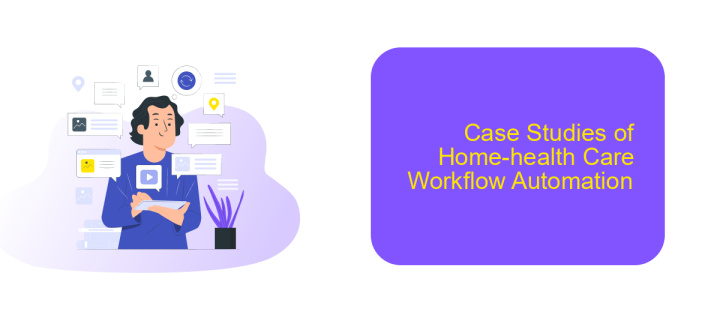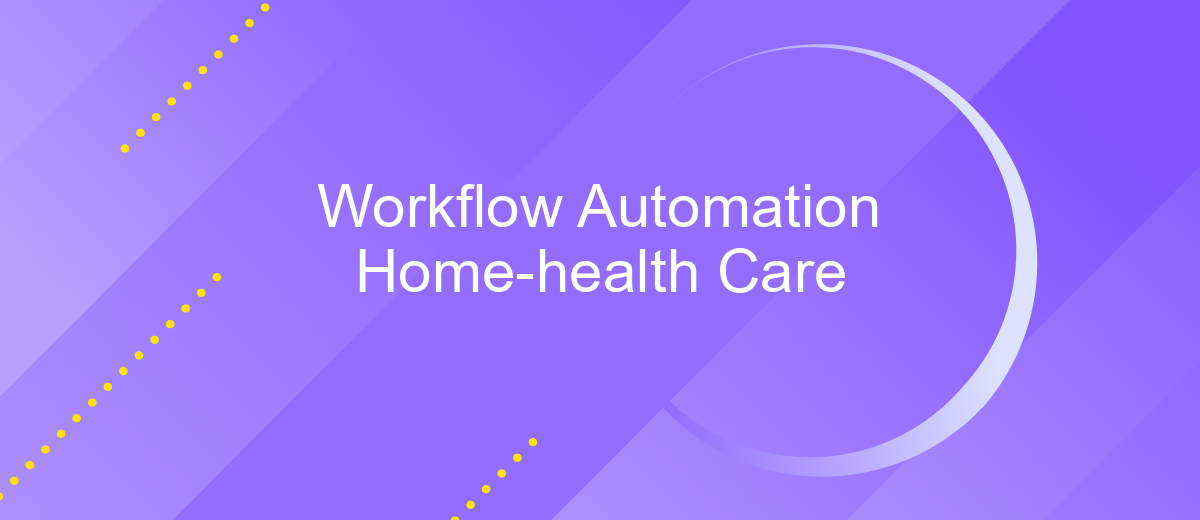Workflow Automation Home-health Care
In the rapidly evolving landscape of home-health care, workflow automation emerges as a game-changer, streamlining processes and enhancing patient outcomes. By leveraging advanced technologies, healthcare providers can optimize scheduling, improve communication, and ensure timely medical interventions. This article explores the transformative impact of workflow automation on home-health care, highlighting its benefits and practical applications for a more efficient and effective care delivery system.
Introduction
Workflow automation in home-health care is revolutionizing the way services are delivered, enhancing efficiency and improving patient outcomes. By automating routine tasks, healthcare providers can focus more on patient care and less on administrative duties.
- Streamlining appointment scheduling
- Automating patient reminders
- Facilitating real-time communication between caregivers and patients
- Ensuring accurate and timely documentation
Integrating these automated workflows can be challenging, but services like ApiX-Drive make it easier by providing seamless integration solutions. ApiX-Drive allows home-health care providers to connect various applications and automate data transfer, ensuring that all systems work in harmony. This not only reduces manual work but also minimizes errors, leading to better patient care and operational efficiency.
Benefits of Workflow Automation in Home-health Care

Workflow automation in home-health care significantly enhances efficiency by streamlining repetitive tasks and reducing manual errors. Automated systems can handle scheduling, patient record management, and billing processes, freeing up healthcare professionals to focus more on patient care. This not only improves the quality of service but also reduces operational costs, leading to a more sustainable healthcare model.
Moreover, integrating various systems through services like ApiX-Drive allows for seamless data transfer between different platforms. This ensures that all patient information is up-to-date and easily accessible, enhancing communication and coordination among healthcare providers. By automating workflows and integrating systems, home-health care providers can offer more personalized and timely care, ultimately improving patient outcomes and satisfaction.
Challenges and Solutions in Workflow Automation for Home-Health Care

Implementing workflow automation in home-health care presents various challenges, such as data integration, real-time monitoring, and compliance with regulations. These issues can hinder the seamless operation of automated systems, affecting the quality of care provided to patients.
- Data Integration: Integrating data from multiple sources can be complex. Using platforms like ApiX-Drive can streamline this process by automating data transfers between different systems.
- Real-Time Monitoring: Ensuring real-time updates and monitoring can be challenging. Implementing IoT devices and integrating them with automated systems can provide timely data to caregivers.
- Regulatory Compliance: Adhering to healthcare regulations is crucial. Automated systems must be designed to ensure compliance with standards such as HIPAA to protect patient information.
By addressing these challenges through effective solutions, home-health care providers can enhance their workflow automation. Utilizing platforms like ApiX-Drive for data integration, incorporating IoT for real-time monitoring, and ensuring regulatory compliance can significantly improve the efficiency and quality of care.
Case Studies of Home-health Care Workflow Automation

Home-health care providers are increasingly turning to workflow automation to enhance efficiency and improve patient outcomes. One notable case study involves a mid-sized home-health care agency that integrated automation tools into their daily operations.
The agency faced challenges in managing patient data, scheduling visits, and coordinating care among multiple healthcare professionals. By implementing workflow automation, they were able to streamline these processes, reducing administrative burdens and allowing staff to focus more on patient care.
- Automated patient data entry and updates
- Real-time scheduling and route optimization for home visits
- Integration of electronic health records (EHRs) with other healthcare systems
- Automated communication between caregivers and patients
One of the key tools the agency used was ApiX-Drive, a service that facilitates seamless integration between various software applications. By leveraging ApiX-Drive, the agency could easily connect their EHR system with scheduling and communication tools, ensuring a smooth and efficient workflow. This integration not only saved time but also minimized errors, contributing to better patient care and satisfaction.
Conclusion
In conclusion, workflow automation in home-health care significantly enhances efficiency and patient outcomes by streamlining administrative tasks and clinical processes. By reducing manual intervention, healthcare providers can focus more on delivering quality care, thereby improving patient satisfaction and operational effectiveness. Automation tools can manage everything from appointment scheduling to real-time patient monitoring, ensuring that care is both timely and accurate.
To achieve seamless integration of various systems and applications, services like ApiX-Drive can be invaluable. ApiX-Drive facilitates the connection between different software platforms, enabling smooth data flow and communication. This ensures that all components of the healthcare ecosystem work in harmony, reducing errors and redundancies. As the healthcare industry continues to evolve, embracing workflow automation and integration services will be crucial for maintaining high standards of care and operational excellence.
FAQ
What is workflow automation in home-health care?
How can workflow automation improve patient care in home-health settings?
What are some common tasks that can be automated in home-health care?
How can I integrate different systems used in home-health care through automation?
Is it difficult to set up workflow automation in a home-health care practice?
Do you want to achieve your goals in business, career and life faster and better? Do it with ApiX-Drive – a tool that will remove a significant part of the routine from workflows and free up additional time to achieve your goals. Test the capabilities of Apix-Drive for free – see for yourself the effectiveness of the tool.

